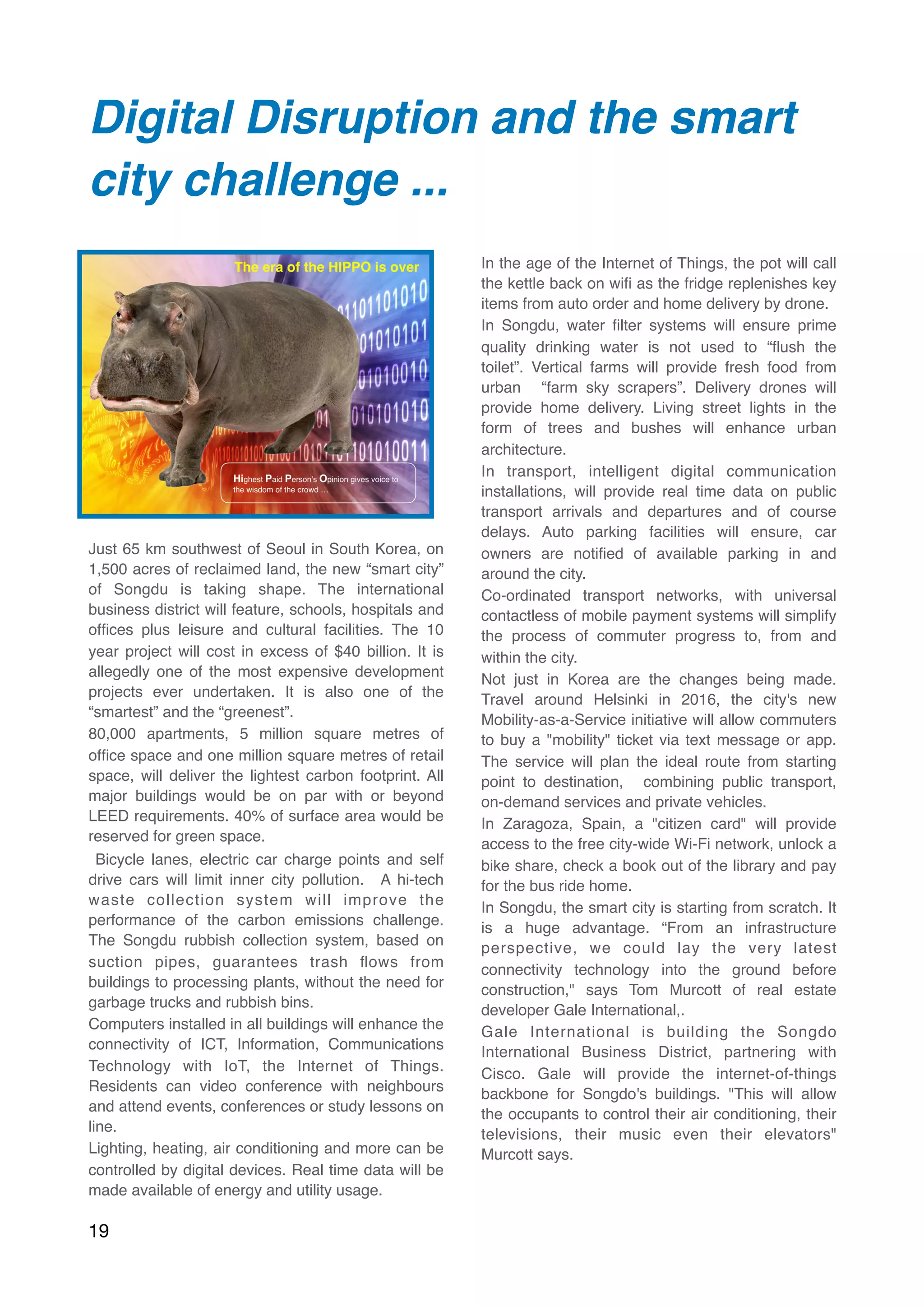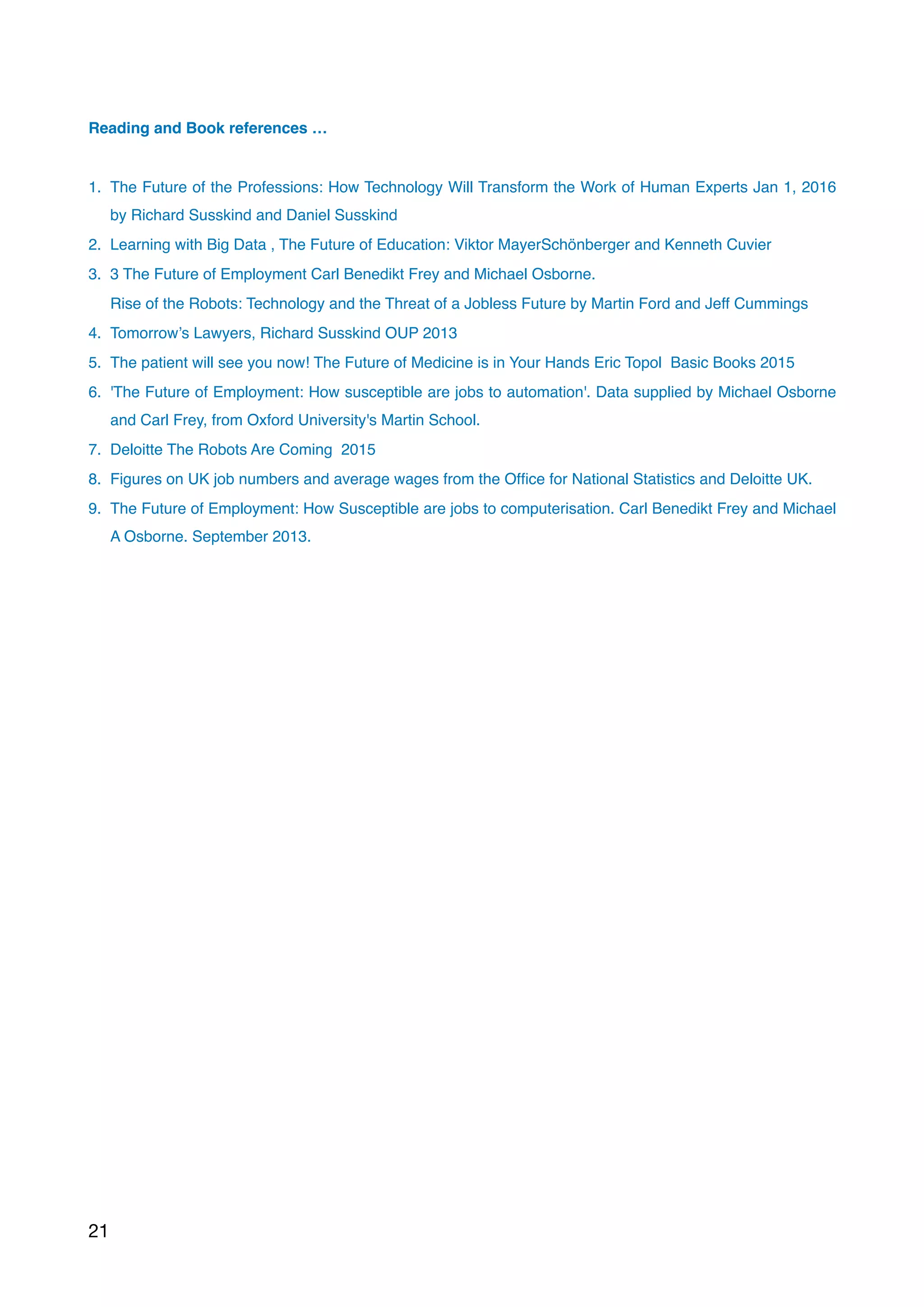This document discusses digital disruption and its causes. It identifies six global forces shaping digital disruption: 1) increasing connectivity through mobile phones and other devices, 2) the growing number of connected devices and emergence of the internet of things, 3) exponential growth in data creation and need for data storage, 4) lower barriers to market participation. These forces are accelerating changes in business models and challenging traditional companies through new entrants like Uber and Airbnb.
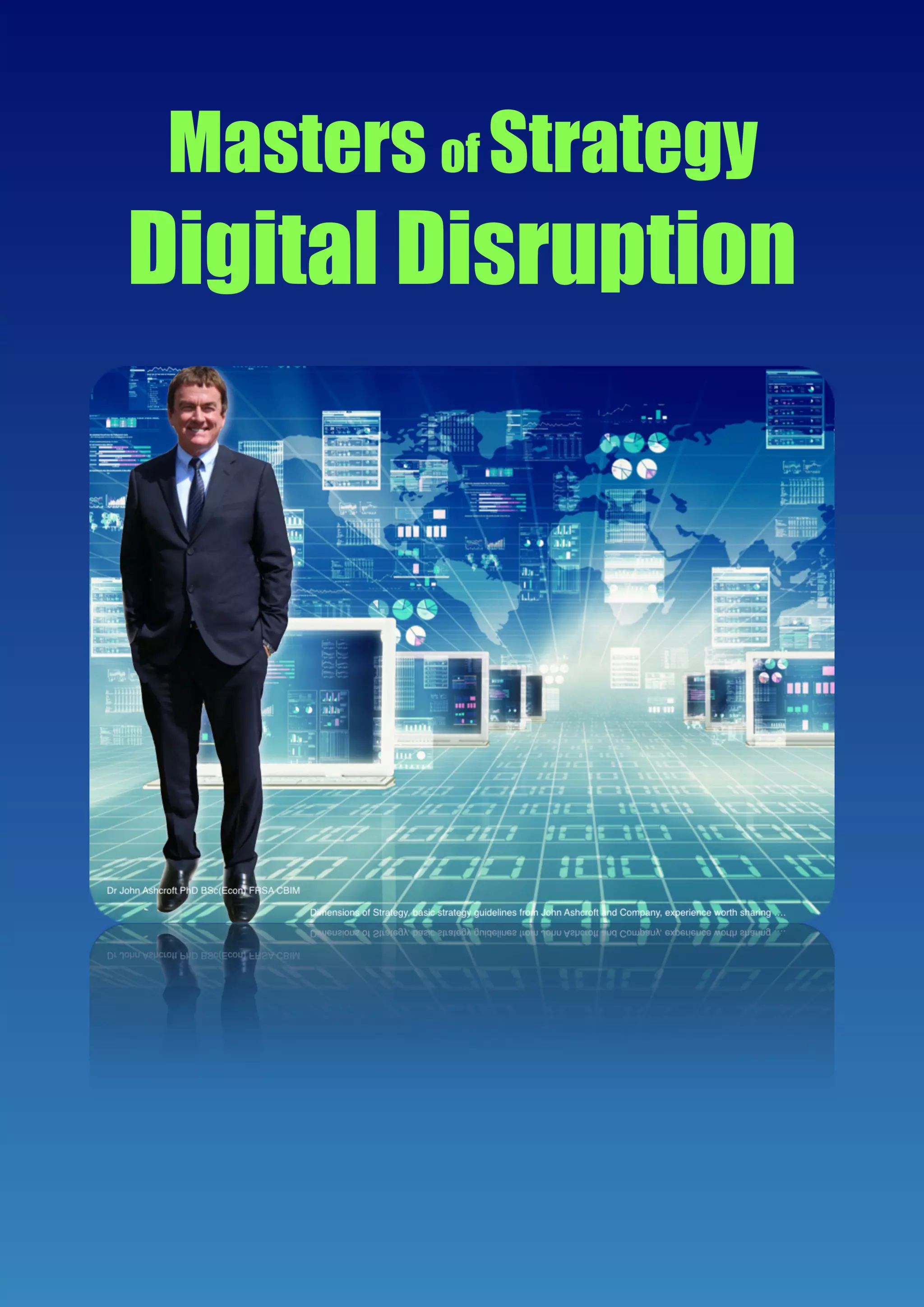
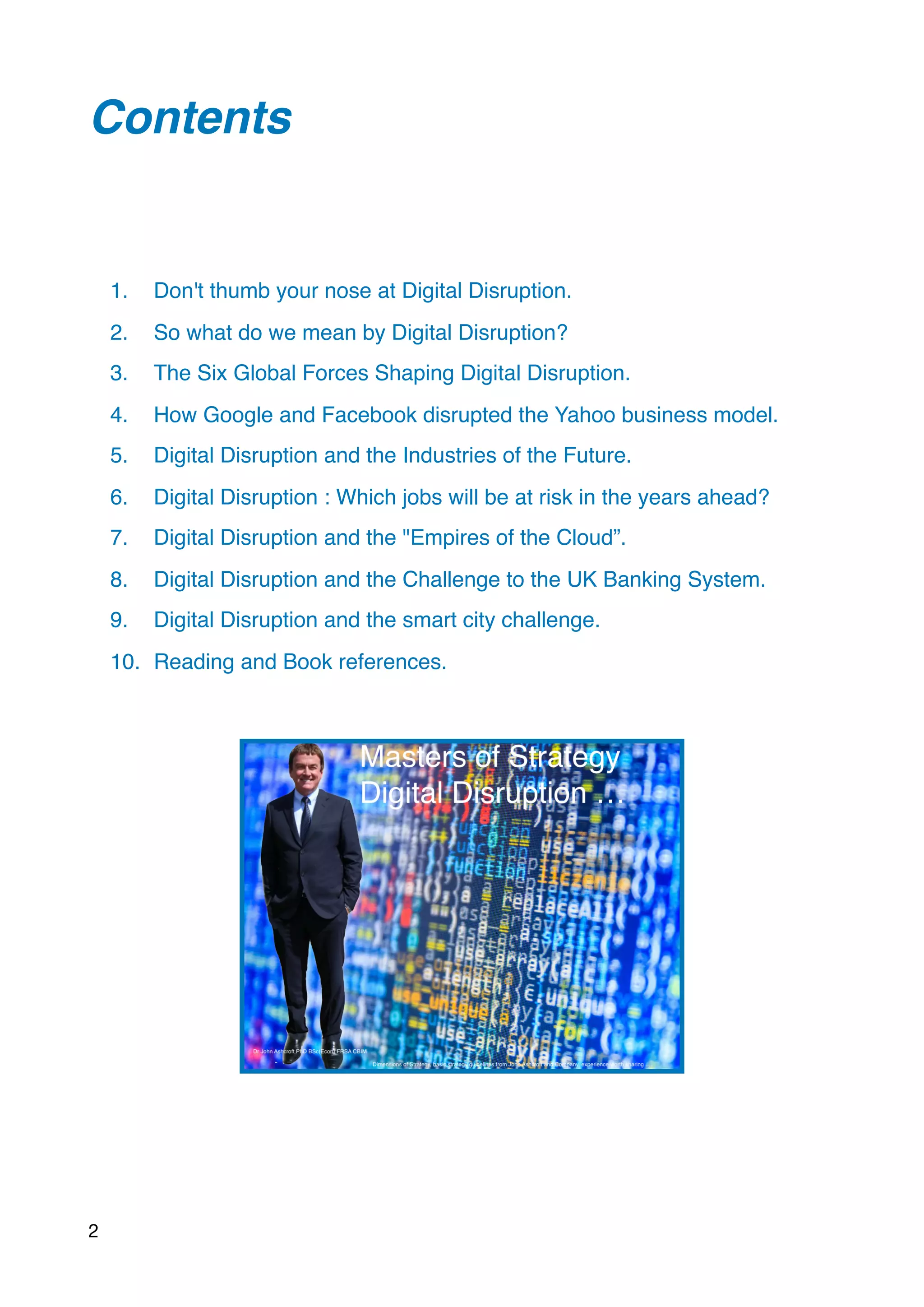
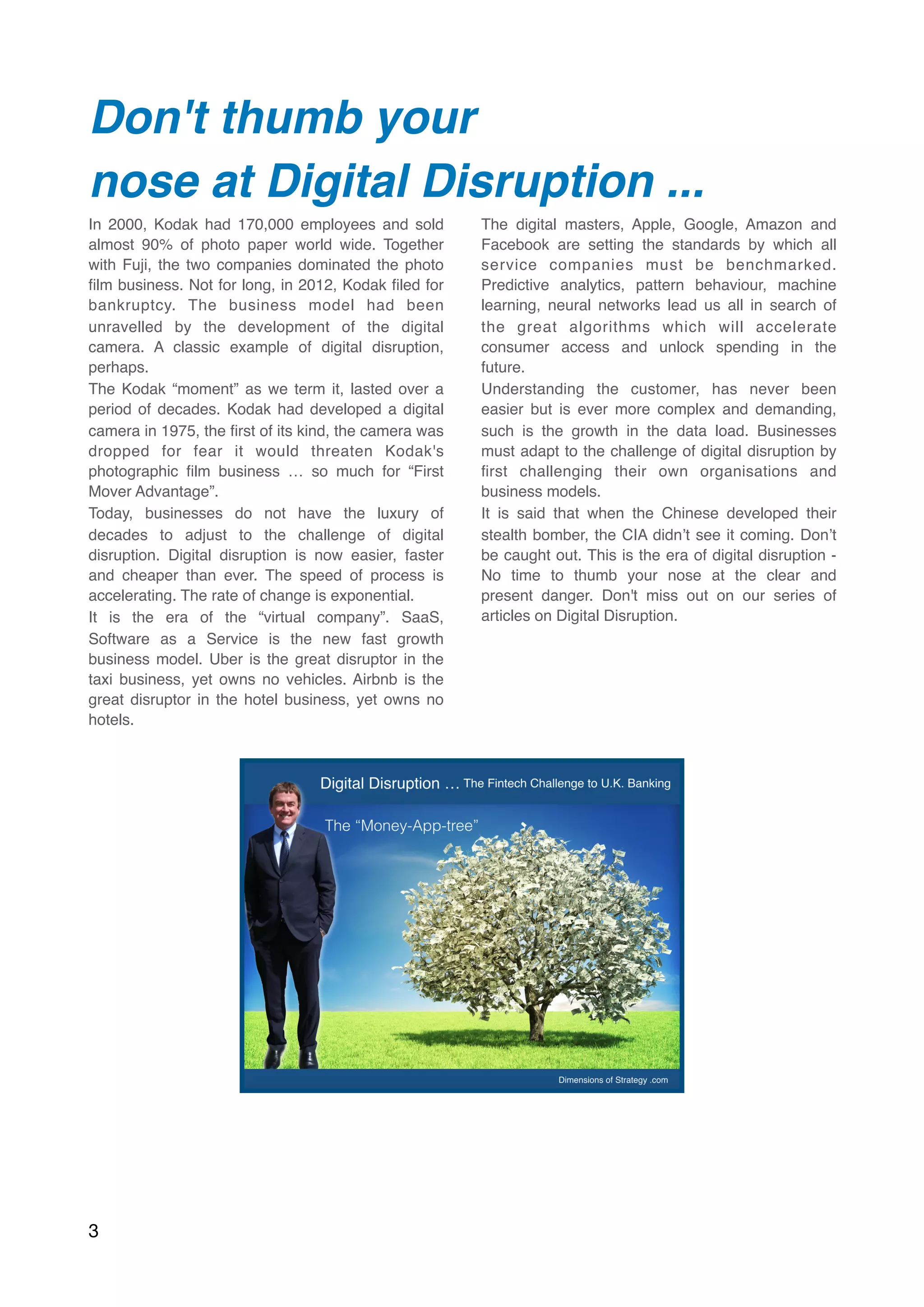
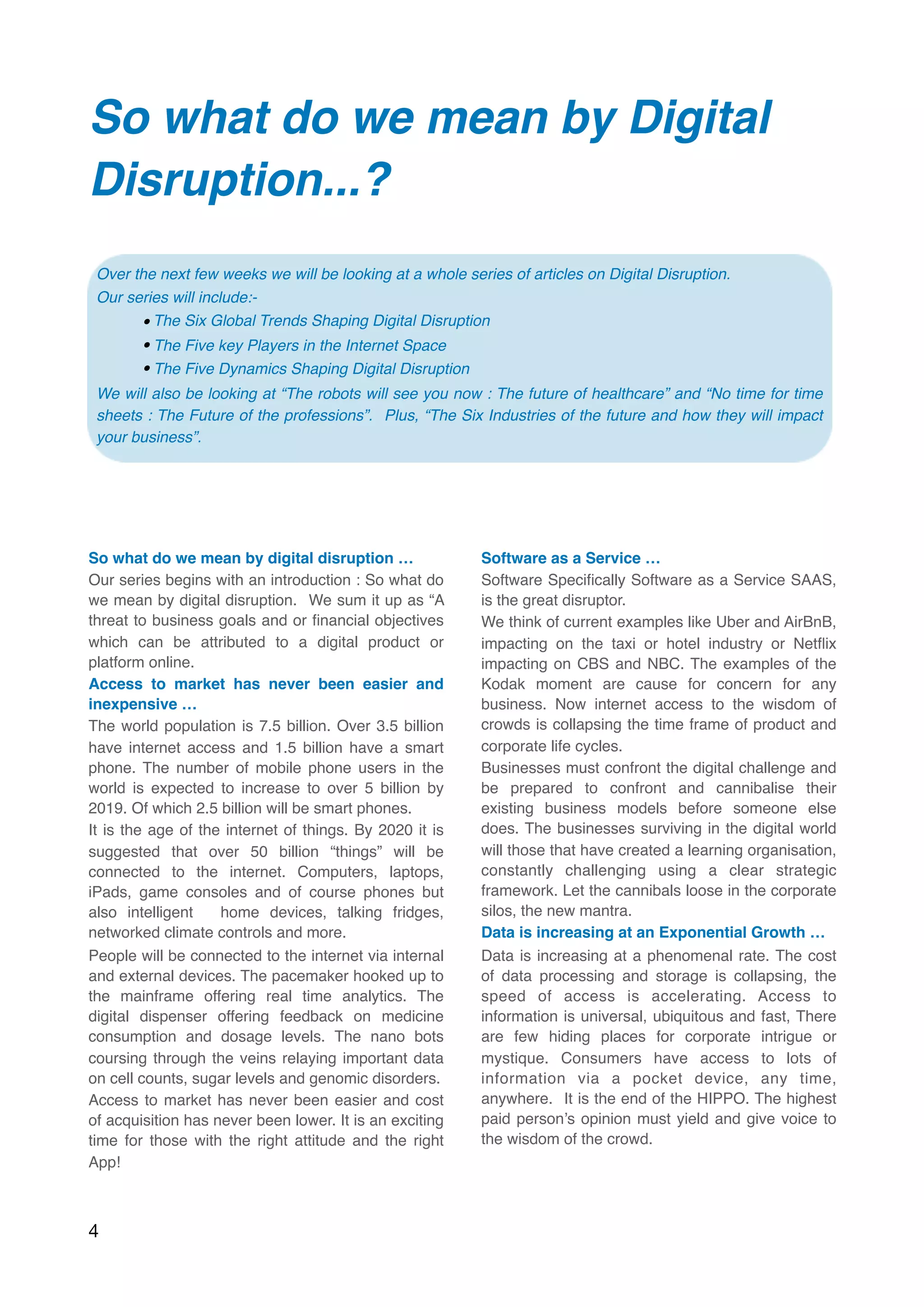
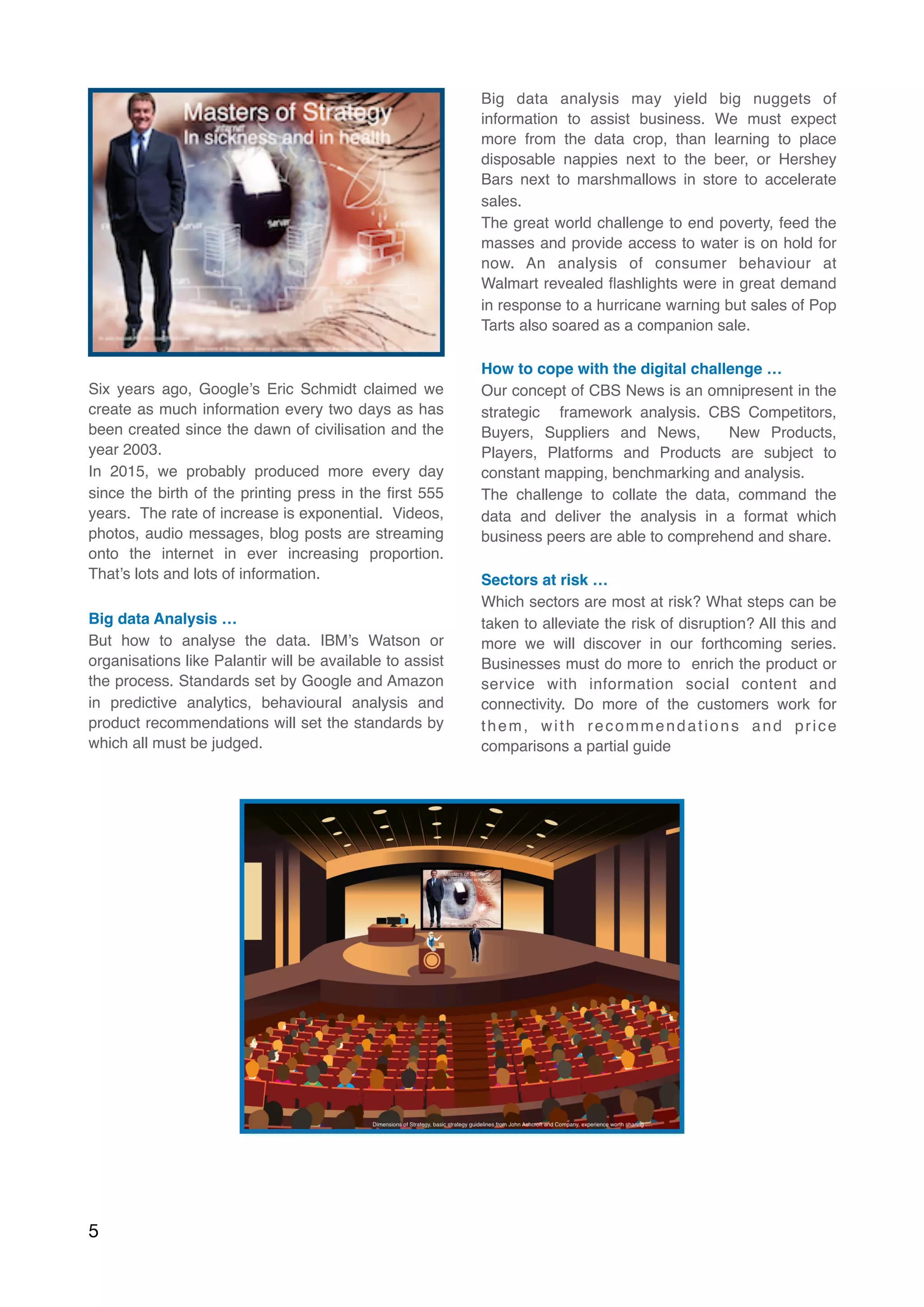

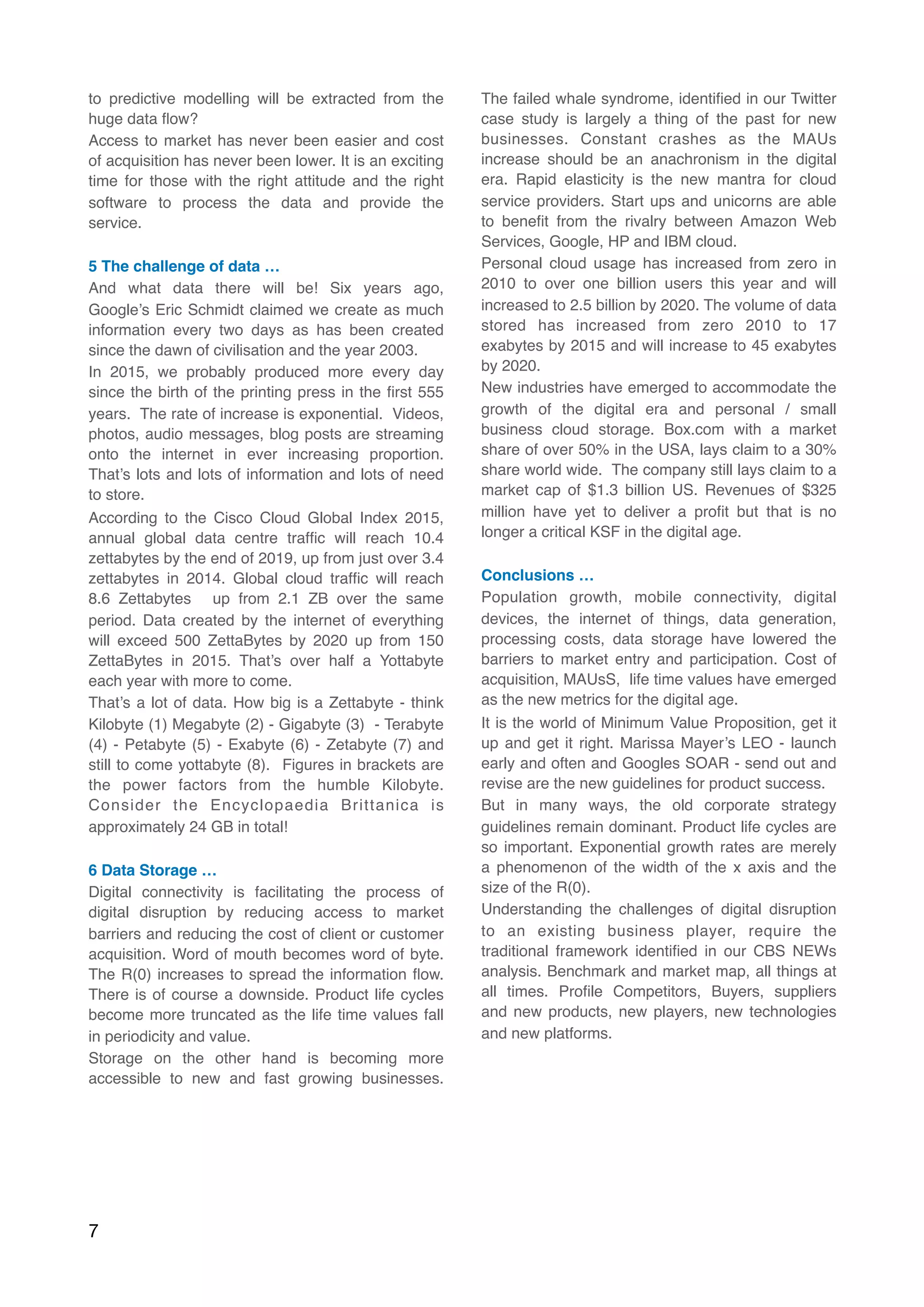
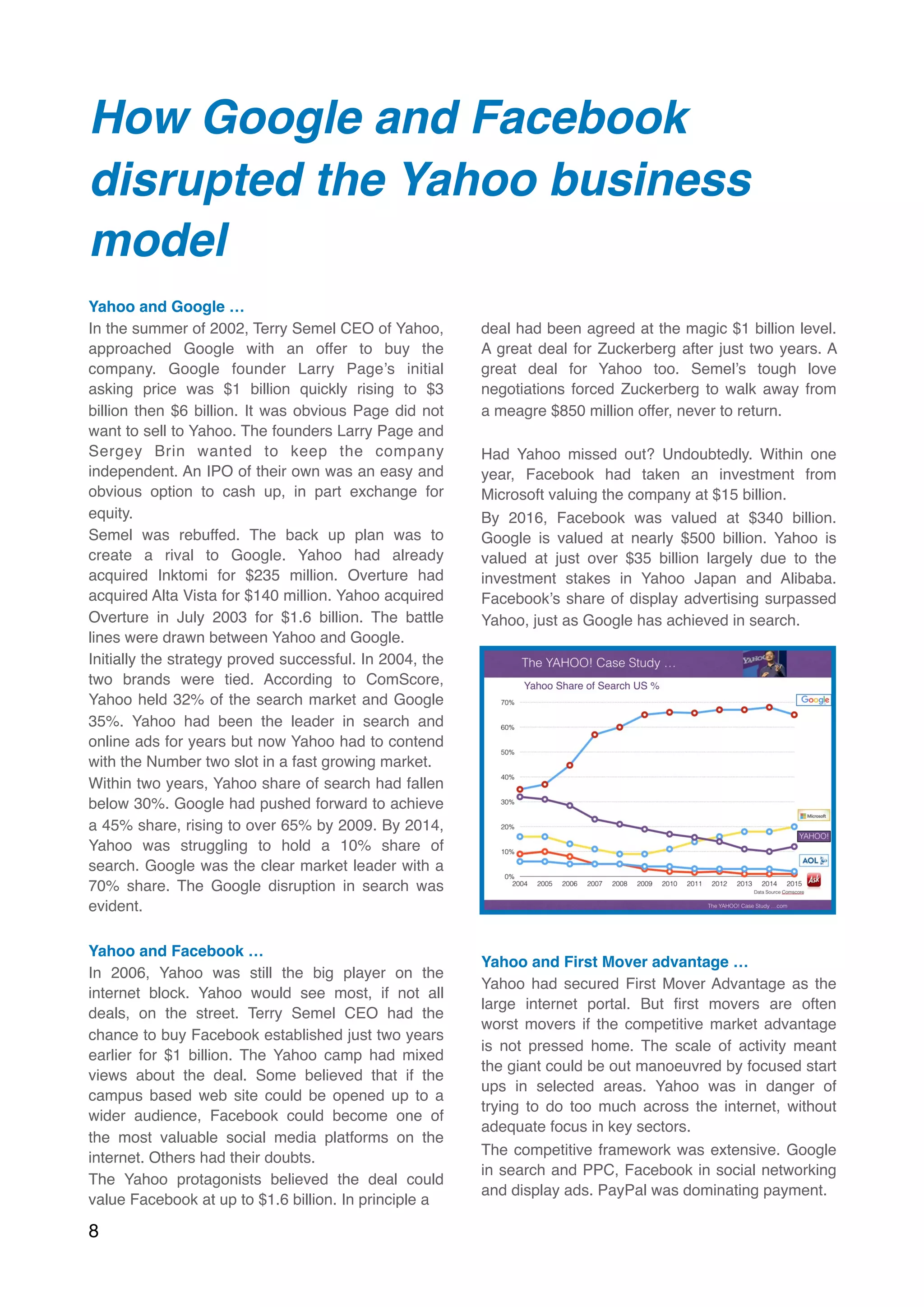

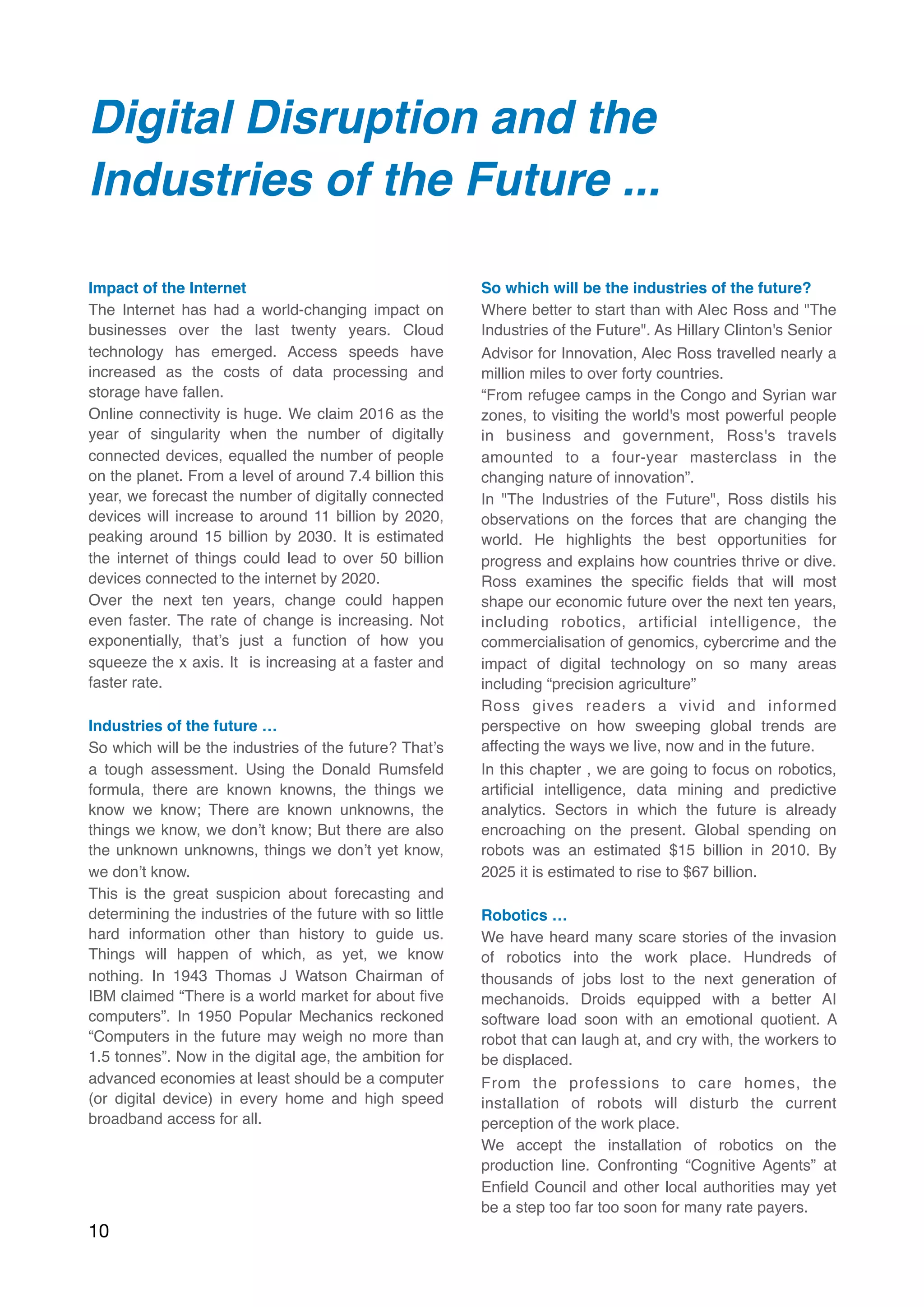



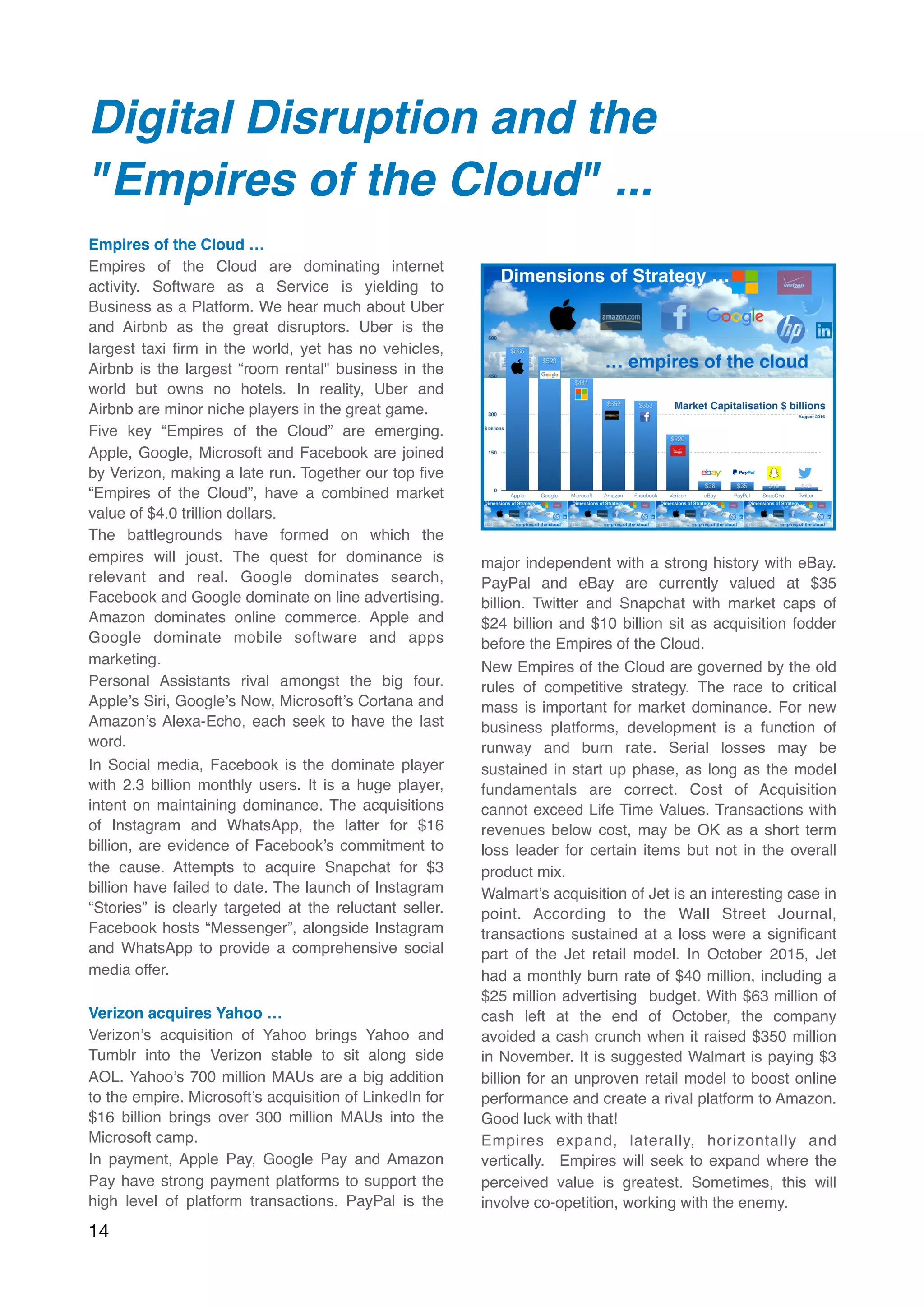
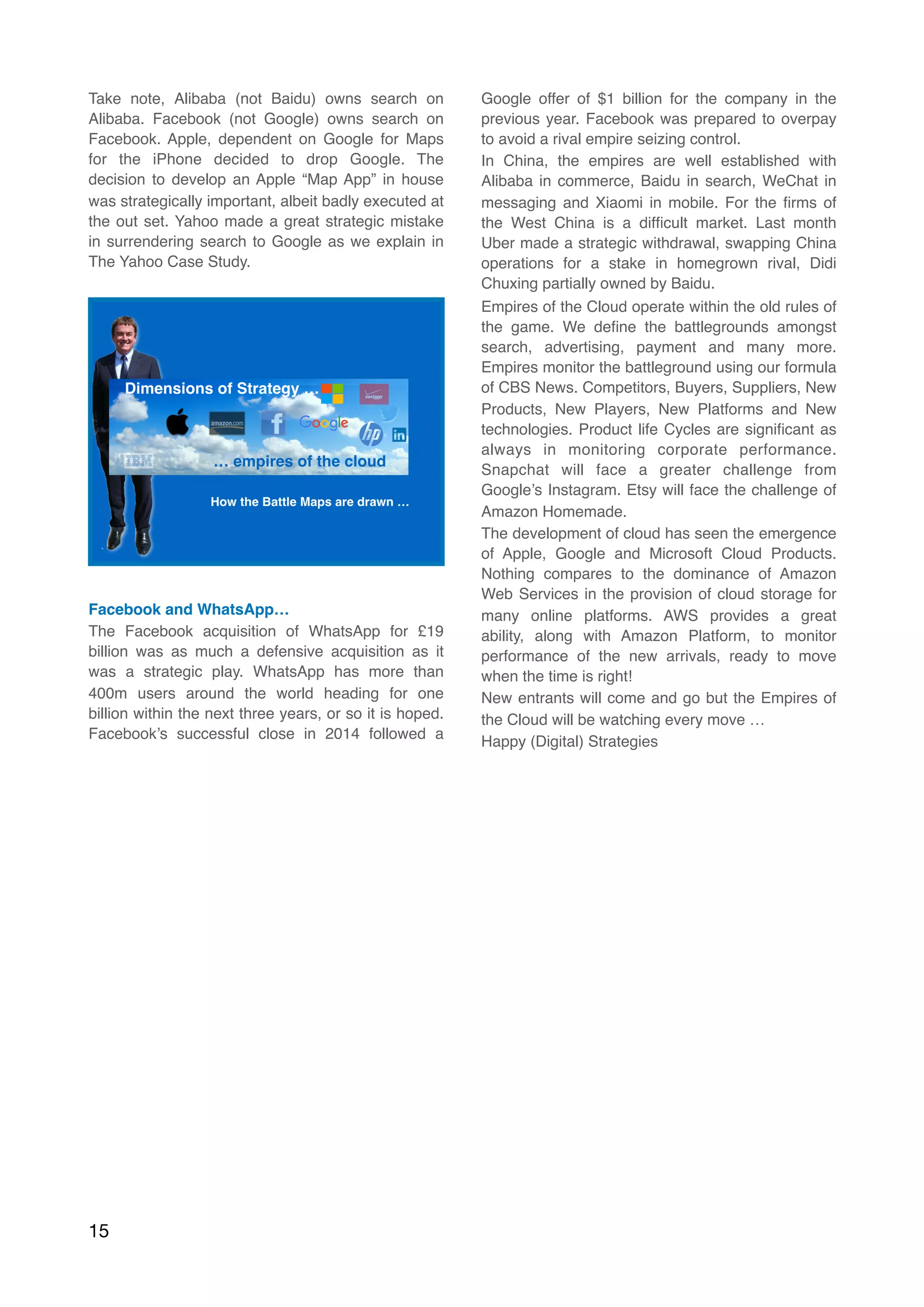

![Digital Disruption and the
Challenge to the UK Banking
System
Digital Disruption and the Challenge to the
Banking System …
In 2016 the Competition Market Authority [CMA]
released the final report on the UK Banking
System. Despite fears about digital disruption and
the potential “uberization” of the bank network,
change is slow to take effect.
The report concludes the smaller, newer,
“challenger” banks find it difficult to grow. Older,
larger, legacy banks do not have to compete “hard
enough” for customers’ business.
Switching, the process by which customers change
bank accounts from one bank to another is still
extremely low. Switching accounts for between 3%
and 4% of total current account business.
The CMA would like to see the dominance of the
Big Four, HSBC, Barclays, Lloyds and RBS
diminished. In 2014 it is estimated the big four, plus
Santander, had a combined UK current accounts
market share of 85%. Add in TSB, Nationwide and
the Co-operative Bank and the total increases to
97%.
For the new challenger banks like OakNorth,
Aldermore, Mondo and Atom the challenge is
particularly difficult. Despite a strong Fintech mobile
platform, Mondo, Atom and Tandem will struggle to
recreate, in banking, the success of AirBnB and
Uber in hotels and transportation.
Scaleability is a difficult growth challenge when
confronted with customer inertia. In banking, far
more is at risk than calling a cab or booking a
room. The commitment Life Time Value [LTV] has
much more at stake as clients put their savings,
houses and transactions on the line.
Customer inertia, with a switching rate sub 4% will
inhibit the growth of challengers whether digital or
not. The marketing spend and capital requirements
to achieve critical mass, are significant
impediments to rapid growth.
So what can the CMA achieve …?
The CMA would like to develop an “Open Banking”
network. A world in which customers are able to
move accounts more easily and more regularly.
Price and performance comparisons should feature
as part of the banks’ marketing profiles.
APIs would be linked to all major banking systems.
Clients would receive reliable, personalised,
financial advice, precisely tailored to individual
circumstances delivers securely and confidentially.
Big data and predictive analytics would enable
cash forecasting to warn of impending
overspending. The standards set by the Empires of
the Cloud, Google, Apple, Facebook and Amazon
are becoming the norm for the banking network.
“People who bought this also bought this, but you
can’t afford it - so don’t look at that site again!”
With Open Banking, apps could use transaction
information to find the current account deals which
suit best. Running a small business, apps could
find the best options for business accounts and
loans. Apps could even help avoid overdraft
charges by moving cash into accounts when they
dip into the red.
17](https://image.slidesharecdn.com/digitaldisruption-181203130913/75/Our-Guide-to-Digital-disruption-Update-2019-17-2048.jpg)

